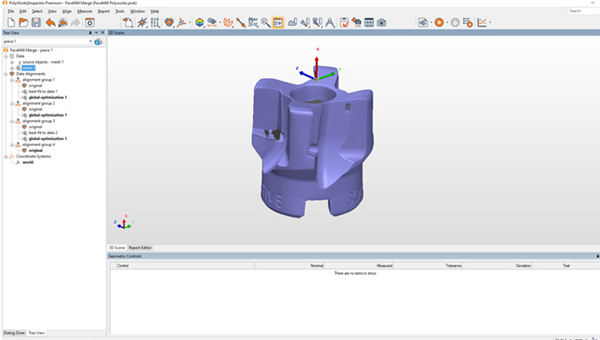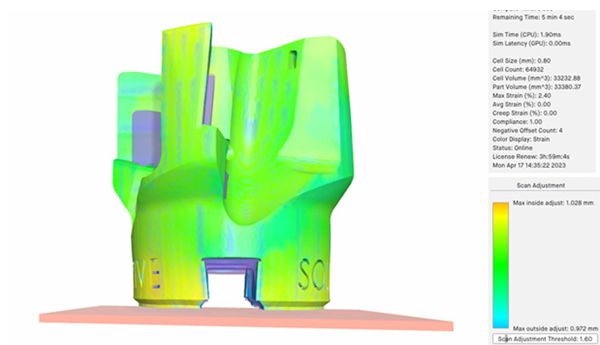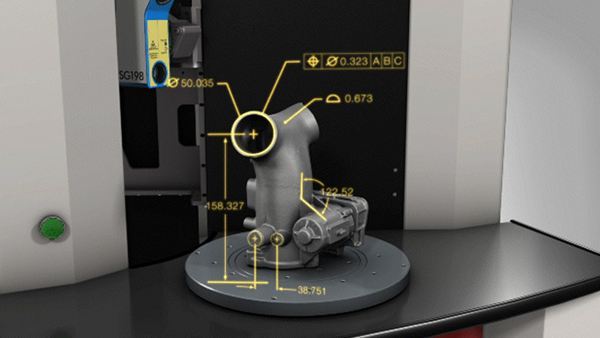When it comes to adopting additive manufacturing into their operations, manufacturers often focus on the machine itself without necessarily considering the entire machine.3D printing workflow. However, the choice of CAD software, post-processing solutions or even inspection tools for the parts created are all important aspects for increasing productivity and effectively integrating this manufacturing method. The SolidCAM company pays particular attention to this and has conducted several studies to understand which solutions are best suited to its customers. In this context, they turned to OGP, a leader in inspection equipment, to help explore 3D metrology scanners and the many benefits they offer, particularly for machine shops.
Metrology is the science of measurement, often the inspection of manufactured parts to ensure that they conform to the design. with3D printing is becoming more and more common and we are starting to see organic parts becoming more and more difficult to inspect. Inspection of these parts is typically performed using a coordinate measuring machine (or CMM), in which a robot measures the shape of the part by repeatedly touching it with a probe. Although this method has a long history of success, it has some limitations, such as the need to write controls before beginning data analysis. However, in recent years, the market has offered more advanced solutions, notably faster and more precise. These are 3D metrology scanners that are particularly useful when used in conjunction with additive manufacturing.


3D metrology scanners are the ideal solution for inspecting parts (Photo credit: ShapeGrabber)
Measurement and inspection
Metrological qualityOne of the most common uses of 3D scanners in additive manufacturing is part inspection. As the designs and shapes of 3D printed parts become increasingly complex, 3D scanners are proving more flexible than other inspection methods and offering key advantages. With a CMM, it is necessary to know exactly what you want to measure and how. You should then write your inspection program accordingly to begin collecting data on these identified characteristics.
Peter Genovese, SolidCAM Applications Engineer, added: “With a 3D scanner, you can simply scan the entire part and have access to all its features at any time. If the user realizes after 3 months that the new features of the part are critical, they just have to do it. Adjust its inspection report in just a few clicks, even after the part has left the site. » This flexibility also means that the operator does not need to first carry out a pre-programmed inspection procedure before starting other operations, but can create an inspection report. and Start scanning parts while identifying areas of interest, helping to improve operational efficiency.


3D scan data of a 3D printed milling cutter (Photo source: SolidCAM)
to use3D metrology scanner for reverse engineering
to use3D metrology scanners also make reverse engineering work easier. This process allows us to understand how a component is manufactured: we analyze its properties, functionality and structure to be able to copy the part and modify it. We start from an already existing part, we “deconstruct” it to understand how it works, we create a copy of it or we propose a new version. In many industries, such as automobiles and aeronautics, reverse engineering is increasingly popular, particularly to produce spare parts that are no longer produced or for which we no longer have initial plans.
With the help ofWith a 3D scanner, users can very easily scan the parts they want to copy, modify, etc. and obtain a 3D model. From there, he can 3D print it directly or import it into CAD software to refine and modify it. Combining 3D scanning and additive manufacturing is particularly interesting for increasing the productivity of such activities.
Analysis and optimization
One of the benefits of additive manufacturing is the ability to produce multiple iterations that meet all of our needs and standards.“Perfect” pieces. You can easily adjust variables, use parameters, and modify designs to get the most out of 3D printing. If these operations are common in the market, what about the analysis of these iterations? This iterative phase can generate dozens, even hundreds of different parts: how can they quickly evaluate their performance? This is where 3D scanners can make the analysis process easier.
3D scanners can be used to create semi-automated inspection routines to quickly and efficiently acquire data from dozens of part iterations. Users can collect sample data to make informed choices about their manufacturing processes. Kenny Betz, SolidCAM Additive Account Manager, continues: “Cataloging part prototypes and iterations throughout the design process can be a costly and time-consuming process. Using a 3D scanner allows us to quickly and accurately capture this data and provide future analysis and improvements. reliable parts history »
3D scanners also make it possible to better optimize the printing stage. The scanned data can be integrated into optimization software and used to optimize the parts to be created. Among the solutions on the market, we can cite Live Sinter from Desktop Metal: it is a multiphysics simulation software based on the metal powder bonding process which simulates the sintering process of parts printed on the Shop System. It allows you to optimize the mesh to avoid any printing errors and take into account possible differences between the desired model and the parts.


Live Sinter software shows the adjustments it makes to a tool model based on scanned data (Photo credit: SolidCAM)
SolidCAM states: “Although the simulations make quite specific assumptions about the printing process and environmental factors, the most reliable way to tune the software is to import the scan data of the printed part into the system and allow for the software to adjust its predictions accordingly.
Source: 3dnatives
Daguang focuses on providing solutions such as precision CNC machining services (3-axis, 4-axis, 5-axis machining), CNC milling, 3D printing and rapid prototyping services.

















